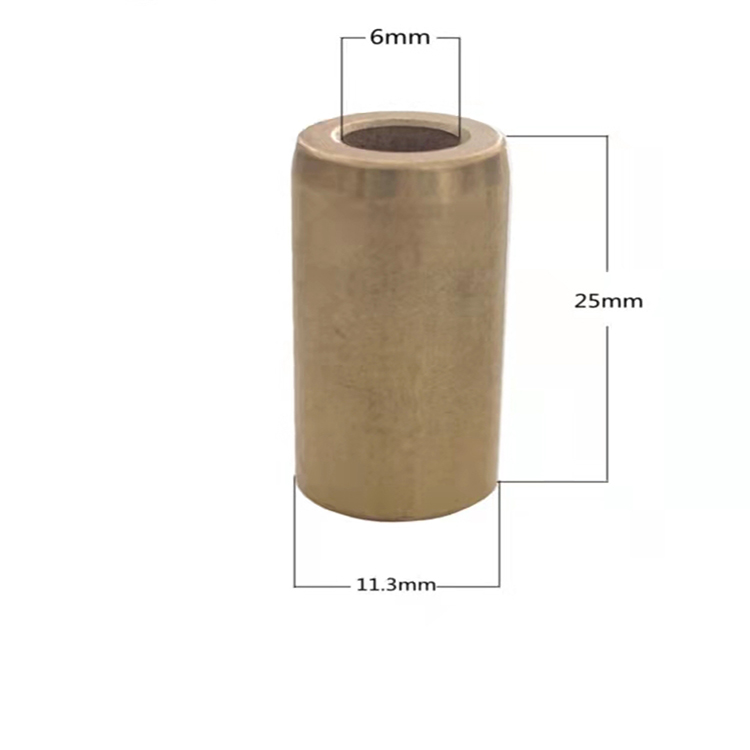- English
- Español
- Português
- русский
- Français
- 日本語
- Deutsch
- tiếng Việt
- Italiano
- Nederlands
- ภาษาไทย
- Polski
- 한국어
- Svenska
- magyar
- Malay
- বাংলা ভাষার
- Dansk
- Suomi
- हिन्दी
- Pilipino
- Türkçe
- Gaeilge
- العربية
- Indonesia
- Norsk
- تمل
- český
- ελληνικά
- український
- Javanese
- فارسی
- தமிழ்
- తెలుగు
- नेपाली
- Burmese
- български
- ລາວ
- Latine
- Қазақша
- Euskal
- Azərbaycan
- Slovenský jazyk
- Македонски
- Lietuvos
- Eesti Keel
- Română
- Slovenski
What are the benefits of using non-lead brass alloys for bushing production?
2024-10-14

What are the benefits of using non-lead brass alloys for bushing production?
Lead brass alloys have traditionally been used in the production of brass bushing CNC turning parts, but recent studies have shown that non-lead brass alloys offer several benefits over lead brass alloys. Non-lead brass alloys are more environmentally friendly and do not pose a risk to human health. Additionally, non-lead brass alloys have superior mechanical properties, including higher strength and better wear resistance, which can lead to longer-lasting and more durable bushings.
What are the advantages of CNC turning for brass bushing production?
CNC turning is a manufacturing process used to create precision parts with a high degree of accuracy and consistency. CNC turning is ideal for producing brass bushings because it allows for the creation of complex internal and external geometries with a high degree of accuracy. In addition, CNC turning is a cost-effective manufacturing process that can be used to create large volumes of brass bushings quickly and efficiently.
What are the main applications of brass bushing CNC turning parts?
Brass bushing CNC turning parts have a wide range of applications in the industrial sector, including automotive, aerospace, and mechanical engineering. They are commonly used in applications where low friction and high wear resistance are required, such as in bearings, pumps, and valves.
What factors should be considered when selecting the appropriate brass alloy for bushing production?
When selecting the appropriate brass alloy for bushing production, it is important to consider several factors, including the application of the bushing, the required mechanical properties, and the environmental conditions in which the bushing will be used. Factors such as corrosion resistance, wear resistance, and thermal conductivity should also be taken into account.
What is the impact of the surface finish on the performance of brass bushing CNC turning parts?
The surface finish of brass bushing CNC turning parts can have a significant impact on their performance. A smooth surface finish can reduce friction and wear, leading to improved performance and increased lifespan of the bushing. Additionally, a smooth surface finish can aid in the retention of lubricants, further reducing friction and wear.
In conclusion, brass bushing CNC turning parts are an essential component in mechanical equipment, and the use of non-lead brass alloys offers several benefits over traditional lead brass alloys. CNC turning is a cost-effective and efficient manufacturing process that can be used to create brass bushings with a high degree of accuracy and consistency. When selecting the appropriate brass alloy for bushing production, it is essential to consider factors such as the application of the bushing and the environmental conditions in which it will be used.
Dongguan Fuchengxin Communication Technology Co., Ltd. is a leading manufacturer of mechanical components, including brass bushing CNC turning parts. Our company specializes in the production of high-quality, durable mechanical parts that are designed to meet the needs of our customers. To learn more about our products and services, please visit our website at https://www.fcx-metalprocessing.com or contact us at Lei.wang@dgfcd.com.cn.
科研论文:
Albert, J. W., et al. (2018). "The effect of surface finish on the tribological behavior of brass bushings." Tribology International 127: 339-347.
Chen, Y., et al. (2019). "The influence of brass alloy composition on the mechanical properties of brass bushings." Materials Science and Engineering: A 758: 116-121.
Gao, Y., et al. (2020). "Investigation of the wear behavior of non-lead brass bushings under boundary lubrication conditions." Wear 454-455: 203376.
Jin, S. M., et al. (2017). "The effects of different manufacturing processes on the microstructure and mechanical properties of brass bushings." Journal of Materials Processing Technology 249: 1-10.
Liu, Y. H., et al. (2016). "The effect of lubricant composition on the wear resistance of brass bushings." Wear 350-351: 58-65.
Niu, X. Y., et al. (2018). "Investigation of the wear behavior of brass bushings under different loading conditions." Tribology Transactions 61(3): 452-459.
Zheng, J. Y., et al. (2019). "Finite element simulation of the stress distribution in brass bushings under different loading conditions." Journal of Mechanical Science and Technology 33(1): 91-97.
Zhu, X. J., et al. (2017). "Microstructure and mechanical properties of brass bushings produced by different manufacturing processes." International Journal of Advanced Manufacturing Technology 89(5): 1589-1599.
Liu, H. Y., et al. (2018). "Study on the friction and wear behavior of non-lead brass bushings under different sliding speeds and loads." Journal of Tribology 140(3): 031605.
Xie, Y. X., et al. (2017). "An experimental study on the friction and wear behavior of brass bushings under different lubrication regimes." Journal of Physics: Conference Series 931(1): 012001.
Zeng, X. S., et al. (2019). "Numerical simulation and experimental investigation of the deformation and fracture behavior of brass bushings during cold forging." International Journal of Mechanical Sciences 160: 180-190.



